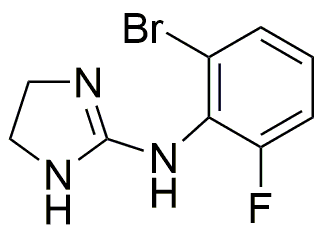Romifidine is widely utilized in research focused on:
- Veterinary Medicine: Primarily used as a sedative and analgesic in horses, providing effective sedation during procedures, which enhances animal welfare and safety.
- Pharmacological Studies: Serves as a valuable compound for studying the effects of sedation and analgesia, helping researchers develop better anesthetic protocols.
- Comparative Medicine: Its applications in equine medicine allow for insights that can be translated into human medicine, particularly in pain management and sedation techniques.
- Research on Drug Interactions: Used to explore interactions with other anesthetics, helping to optimize sedation protocols for various veterinary procedures.
- Behavioral Studies: Assists in understanding the behavioral effects of sedation in animals, which is crucial for improving handling and treatment in veterinary practices.
General Information
Properties
Safety and Regulations
Applications
Romifidine is widely utilized in research focused on:
- Veterinary Medicine: Primarily used as a sedative and analgesic in horses, providing effective sedation during procedures, which enhances animal welfare and safety.
- Pharmacological Studies: Serves as a valuable compound for studying the effects of sedation and analgesia, helping researchers develop better anesthetic protocols.
- Comparative Medicine: Its applications in equine medicine allow for insights that can be translated into human medicine, particularly in pain management and sedation techniques.
- Research on Drug Interactions: Used to explore interactions with other anesthetics, helping to optimize sedation protocols for various veterinary procedures.
- Behavioral Studies: Assists in understanding the behavioral effects of sedation in animals, which is crucial for improving handling and treatment in veterinary practices.
Documents
Safety Data Sheets (SDS)
The SDS provides comprehensive safety information on handling, storage, and disposal of the product.
Product Specification (PS)
The PS provides a comprehensive breakdown of the product’s properties, including chemical composition, physical state, purity, and storage requirements. It also details acceptable quality ranges and the product's intended applications.
Certificates of Analysis (COA)
Search for Certificates of Analysis (COA) by entering the products Lot Number. Lot and Batch Numbers can be found on a product’s label following the words ‘Lot’ or ‘Batch’.
*Catalog Number
*Lot Number
Certificates Of Origin (COO)
This COO confirms the country where the product was manufactured, and also details the materials and components used in it and whether it is derived from natural, synthetic, or other specific sources. This certificate may be required for customs, trade, and regulatory compliance.
*Catalog Number
*Lot Number
Safety Data Sheets (SDS)
The SDS provides comprehensive safety information on handling, storage, and disposal of the product.
DownloadProduct Specification (PS)
The PS provides a comprehensive breakdown of the product’s properties, including chemical composition, physical state, purity, and storage requirements. It also details acceptable quality ranges and the product's intended applications.
DownloadCertificates of Analysis (COA)
Search for Certificates of Analysis (COA) by entering the products Lot Number. Lot and Batch Numbers can be found on a product’s label following the words ‘Lot’ or ‘Batch’.
*Catalog Number
*Lot Number
Certificates Of Origin (COO)
This COO confirms the country where the product was manufactured, and also details the materials and components used in it and whether it is derived from natural, synthetic, or other specific sources. This certificate may be required for customs, trade, and regulatory compliance.


